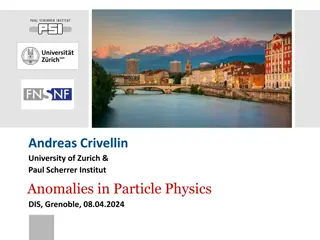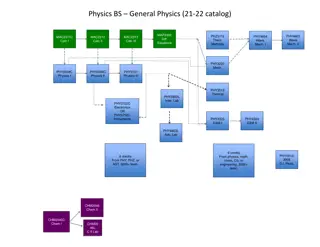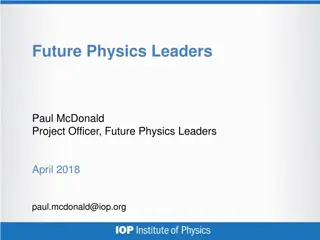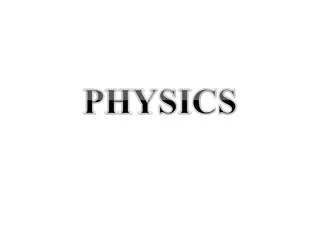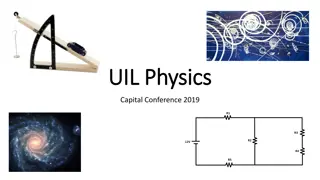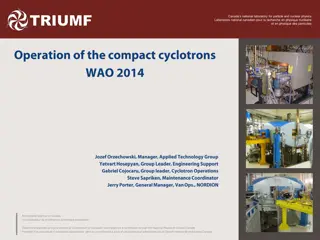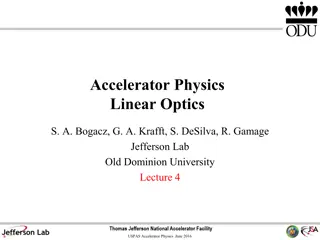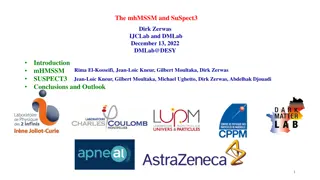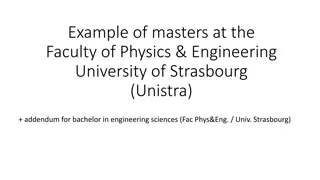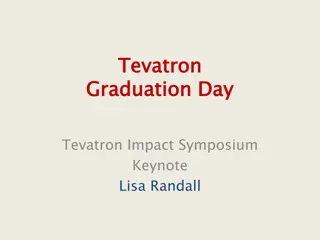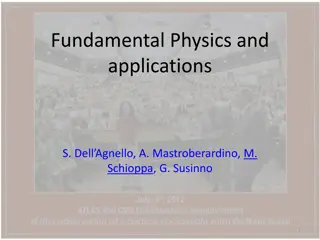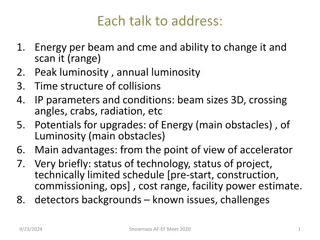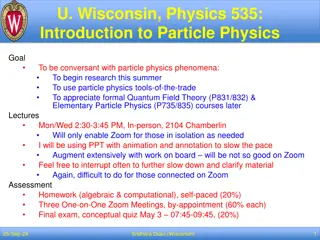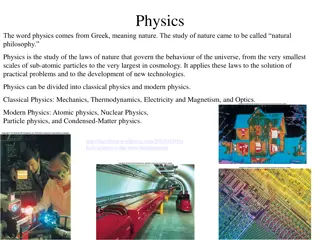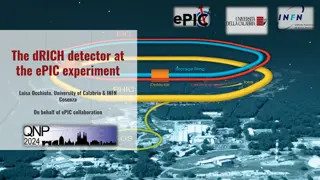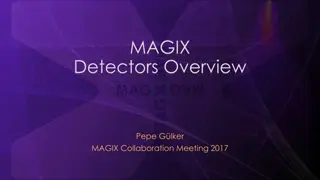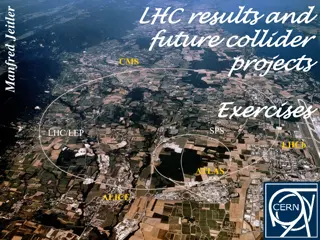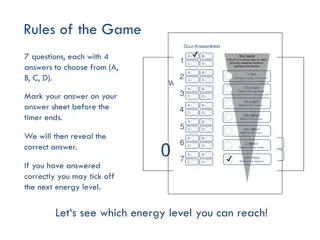Particle Physics: Part 1
Delve into the world of nuclear reactions, energy conservation, and particle accelerators in particle physics. Discover how energy-mass equivalence plays a crucial role in understanding these reactions and learn about the fundamental forces that govern the Universe.
Download Presentation

Please find below an Image/Link to download the presentation.
The content on the website is provided AS IS for your information and personal use only. It may not be sold, licensed, or shared on other websites without obtaining consent from the author.If you encounter any issues during the download, it is possible that the publisher has removed the file from their server.
You are allowed to download the files provided on this website for personal or commercial use, subject to the condition that they are used lawfully. All files are the property of their respective owners.
The content on the website is provided AS IS for your information and personal use only. It may not be sold, licensed, or shared on other websites without obtaining consent from the author.
E N D
Presentation Transcript
Particle Physics: Part 1 Questions to keep in mind: What is conserved during nuclear reactions? How can energy be created in these reactions? How do particle accelerators accelerate particles? What are fundamental forces in the Universe?
What we already know Atoms contain protons & neutrons in the nucleus, surrounded by orbiting electrons. There are three types of radiation. Alpha: A group of two protons & two neutrons, i.e. a helium nucleus. Beta: A high energy electron released from the nucleus due to the breakdown of a neutron (an extra proton appears in the nucleus). Gamma: an electromagnetic (EM) wave.
What we already know The Principle of Conservation of Energy Energy can neither be created or destroyed but can be changed from one form to another. Energy-Mass Equivalence E = mc2 E is energy in joules (J) m is the mass in kilograms (kg) c is the speed of light in metres per second (m/s)
Conservation In any nuclear reaction Energy-mass is conserved. E = mc2 Momentum is conserved. m1v1= m2v2 Electric charge is conserved.
The Neutrino Experiments involving beta emission found that momentum and energy were ever so slightly not conserved. 1931 Pauli predicts a tiny and very weakly interacting particle (hard to detect) called the neutrino ( ) is also being emitted . 1956 Neutrino detected for the first time. Neutrinos have no charge and a ridiculously small mass, < 2.14 10 37kg (probably).
Alchemy! 1932 Cockroft & Walton accelerate protons to cause lithium to disintegrate. The first particle accelerator causing the first artificial splitting of a nucleus. 3+ ?1 1 ??4 2+ ??4 2+ ?????? ??7 One of Cockroft & Walton s accelerators is shown here. It was capable of generating 1 MeV of energy
Cockroft & Waltons Experiment The accelerator used transformers, diodes and capacitors to generate its large voltage. Protons struck the Li screen at 45O. -particles emitted and caused scintillations (flashes) on the detectors.
Cockroft & Waltons Experiment Energy Before 1 MeV Energy After 17.3 MeV Some mass was converted into energy, E = mc2 ??7 Mass Calculation in kg Reactants: 1.165007x10-26+ 1.673493x10-27 =1.332356x10-26 Products: 2 x 6.646322x10-27= 1.329264x10-26 Difference: 3.092x10-29= 2.7828x10-12 J 3+ ?1 1 ??4 2+ ??4 2+ ?????? = 17.39 MeV
Particle Accelerators The CW Accelerator started a flurry of activity in building both Linear Accelerators and Circular accelerators. Circular accelerators have the advantage over linear accelerators of boosting the speed of the particles again and again. Probably the most well known now is the Large Hadron Collider (LHC) at CERN in Geneva. How the LHC accelerates particles: https://www.youtube.com/watch?v=oWpy0SAAI6E What the LHC is looking for: https://www.youtube.com/watch?v=328pw5Taeg0
Particle Accelerators Protons are given energy as they move through the accelerator. When the collisions occur this extra energy generates new particles for tiny fractions of a second, e.g. the Higg s Boson. The mass of these new particles is usually measured in eV, showing how much of the extra energy went into creating the new particles.
LHC Particle Accelerator Two packets of protons circling in opposite directions. Brought together at the detectors. EM fields pull the protons forward and then push them as they go past. Speeding them up each time they go around. Strong magnets are used to control the curve of the beam.
Fundamental Forces All interactions (that we know of) in the Universe are covered by four different forces. The gravitational force o Occurs between any objects that have mass. o Essentially negligible for sub-atomic particles. o Infinite reach The electromagnetic force o Occurs between any objects that have charge. o Keeps atoms and molecules together. o Infinite reach The strong nuclear force o Only acts on hadrons (things made from quark e.g. protons & neutrons). o Binds the nucleus together. o Strongest of the forces. o Only acts over distances smaller than 10-15m The weak nuclear force o Acts on all particles o Range of 10-18m o Controls -decay



